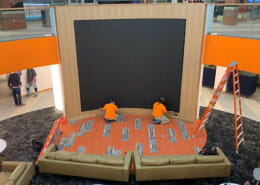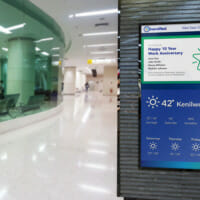BLOG
Thinking Through Your Collaboration Workflow
How performing an internal evaluation of your needs will help you choose the right platform.
As an organization, tackling the process of determining a strategy as it relates to your huddle or collaboration rooms can be difficult. Knowing what to prioritize, what to think about and knowing your users’ requirements in advance will affect how your new space is ultimately used and enjoyed. To get started, you’ll need to perform an internal evaluation to reveal your huddle and collaboration space needs.
Platform Drivers
It’s critical that you understand your users’ needs first. Then, once you understand their workflow requirements, you can begin to architect the spaces that will fulfill these needs to achieve optimum collaboration functionality. This most often starts with an assessment of their collaboration platform workflows. You should review your IT strategy as well as your current collaboration platform usage and analyze those metrics to help determine which applications are driving the most positive and efficient user experiences.
What platform is your organization using for file sharing? What about note taking? What’s your meeting platform, conferencing? Are you using a voice system? How do your users schedule meetings? The answers to questions like these will allow you to gain valuable insight into the most efficient ways for you to design the physically supportive collaboration solutions that map most seamlessly to both your IT, your users’ needs and to your overall company collaboration strategy. We often find organizations don’t think they even have a collaboration strategy until we’ve joined them for a discovery session. Then, after we’ve gone through a series of question and answer sessions, they discover that they not only have a strategy, but that they should probably be giving it more attention.
Physical Spaces
Room specifications are often different for various rooms in your space. Thinking through the different types of rooms and your users’ individual requirements can help you to guarantee greater platform adoption levels. What do users really want to experience in these spaces? How many people or typical users will occupy each space? What methods of content sharing will be involved? How important is voice and video? And, ultimately, what specific user requirements will you need to fulfill in these spaces?
Here are some key metrics to help you with navigating through your own discovery to get started:
- Participant count versus physical room size
- Typical sizing scenarios to help you frame room size to people/count
- 1-5 Huddle
- 5-10 Small/Med conference Room
- 10-20 Large Conference Room
- 25+ Boardroom or Design-Build Space
- 50+ All Hands or Open-Presentation Space
- 100+ Divide and Combine Spaces
Where can your cameras be placed in the room to create the best FOV (field-of-view) for remote users with the least amount of parallax (eye/line displacement)?
- Huddle means close. Without a wide-angle lens, participants closest to the camera tend to be out of view.
- Wide angles sometimes lead to a fish-eye effect. They are intended to be sat close to, therefore the further back you get, the worse the image.
Once your rooms have been fully outlined, think about the technology to go along with each room. Fill in the technology to where it fits best:
- Have you decided on your needs for platform native functionality? Or do you require legacy-systems interoperability for voice and video systems while you migrate existing systems to newer, more cost-efficient models?
- How will you share content in these spaces?
- Would voice integration improve overall usability?
- Are there places where purposeful systems automation would make the workflows more user transparent?
- Have you considered door-side signage and in-room displays as an opportunity for messaging and scheduling information?
Evaluating your spaces and investments in technology to outfit them in a way that creates the most harmonic experience for your users will result in the greatest levels of user adoption.








